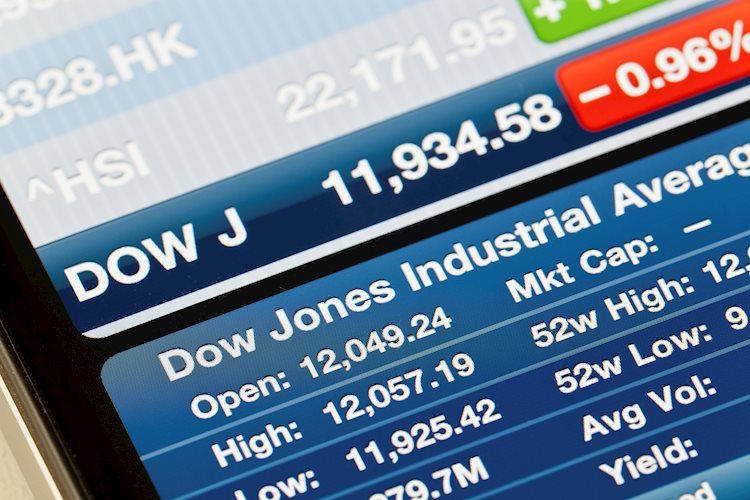- The Dow Jones shed 500 points to kick off the new trading week.
- Equities are pulling back in the face of lower rate cut expectations.
- Middle East geopolitical tensions are driving risk appetite even lower.
The Dow Jones Industrial Average (DJIA) shed around 500 points on a shaky market Monday, with risk appetite shriveling on the back of decreased rate cut expectations and tensions in the Middle East running on the hot side. Markets expect less than 50 bps in further rate cuts from the Federal Reserve (Fed) for the remainder of the year. Crude Oil prices are rising as commodity traders brace for a spat between Iran and Israel to widen into an outright conflict.
Equities took a hit at the outset of a new trading week, waylaid by crumpling investor hopes for further outsized rate cuts from the Fed through the rest of 2024. According to the CME’s FedWatch Tool, rate traders now expect roughly an 80% chance of a single 25 bps rate trim from the Fed in November. The remaining roughly 20% expect the Fed to stand pat on November 7.
Markets are bracing for an escalation in the newly-sparked conflict between Iran and Israel; commodity investors are worried that Israel is set to lash out at Iran and strike Iran’s Crude Oil industry, a move that could send global energy prices soaring. Iran represents roughly 4% of global Crude Oil production. Israel is expected to deliver some kind of retaliatory attack against Iran, which launched a missile strike against Israel last week in retaliation for Israel invading neighboring Lebanon.
Dow Jones news
A risk-off Monday is weighing down equities across the board, with all but three of the DJIA’s constituent securities dipping into the red for the day. Chevron (CVX) rose one-third of one percent, as the fuels provider benefits from rapidly-accelerating Crude Oil prices. Chevron stock climbed over $151 per share.
Insurance provider Travelers Companies (TRV) outran the rest of the Dow Jones losers, tumbling nearly 5% to fall below $225 per share. Despite the headline hit on Travelers Companies, the insurance issuer is doing very well for itself, climbing over 55% from a late 2019 low of $99.35.
Dow Jones price forecast
Price action on the Dow Jones chart suggests a generally bullish sentiment since May, with the index consistently trading above its 50-day Exponential Moving Average (EMA), indicating that short-term momentum remains strong. The 200-day EMA serves as a significant support level, with the index maintaining a comfortable distance from it, reinforcing the underlying strength of the broader uptrend.
However, more recent sessions show a mild pullback. The DJIA faces resistance at around the 42,300 level, which has acted as a psychological barrier since mid-September. The downward price movement from this resistance, combined with a decline in momentum, is something to monitor closely. The MACD histogram has shifted into the negative zone, while the MACD line has crossed below the signal line, both of which are bearish signals, suggesting that short-term momentum may be slowing down.
Dow Jones daily chart
Fed FAQs
Monetary policy in the US is shaped by the Federal Reserve (Fed). The Fed has two mandates: to achieve price stability and foster full employment. Its primary tool to achieve these goals is by adjusting interest rates. When prices are rising too quickly and inflation is above the Fed’s 2% target, it raises interest rates, increasing borrowing costs throughout the economy. This results in a stronger US Dollar (USD) as it makes the US a more attractive place for international investors to park their money. When inflation falls below 2% or the Unemployment Rate is too high, the Fed may lower interest rates to encourage borrowing, which weighs on the Greenback.
The Federal Reserve (Fed) holds eight policy meetings a year, where the Federal Open Market Committee (FOMC) assesses economic conditions and makes monetary policy decisions. The FOMC is attended by twelve Fed officials – the seven members of the Board of Governors, the president of the Federal Reserve Bank of New York, and four of the remaining eleven regional Reserve Bank presidents, who serve one-year terms on a rotating basis.
In extreme situations, the Federal Reserve may resort to a policy named Quantitative Easing (QE). QE is the process by which the Fed substantially increases the flow of credit in a stuck financial system. It is a non-standard policy measure used during crises or when inflation is extremely low. It was the Fed’s weapon of choice during the Great Financial Crisis in 2008. It involves the Fed printing more Dollars and using them to buy high grade bonds from financial institutions. QE usually weakens the US Dollar.
Quantitative tightening (QT) is the reverse process of QE, whereby the Federal Reserve stops buying bonds from financial institutions and does not reinvest the principal from the bonds it holds maturing, to purchase new bonds. It is usually positive for the value of the US Dollar.
Read the full article here

